Display Modes
Rhinoceros > Settings > Display Modes
The Display modes options manage the appearance of the viewport display modes.
-
Use the OptionsExport and OptionsImport commands for sharing these settings with other Rhino applications.
The built-in display modes are:
 Wireframe
Wireframe
Sets the viewport display to unshaded wireframe. 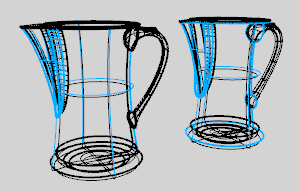
 Shaded
Shaded
Sets the viewport to opaque shaded mode. Shaded mode uses a mesh to shade surfaces using the layer colors.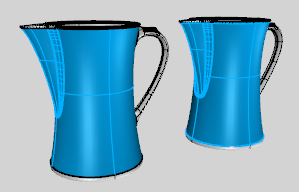
 Raytraced
Raytraced
Sets the viewport to a raytraced render preview mode.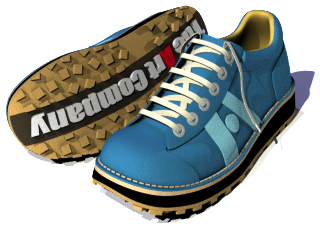
 Rendered
Rendered
Shades the viewport with a simulation of the rendered view.
 Ghosted
Ghosted
Sets viewport display so surfaces are translucent.
 X-Ray
X-Ray
Shades with isoparametric curves not obscured by objects in front.
All wireframe and point objects are displayed, even if they would normally be hidden by surfaces that are in front of them in the viewport.
 Technical
Technical
Simulates technical drawing of 3-D objects. Occluded silhouettes, intersections, creases and borders are drawn with dotted lines and they update in real-time as you manipulate the view.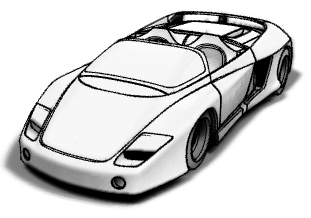
 Artistic
Artistic
Uses an image background and soft lines to create a pencil drawing effect.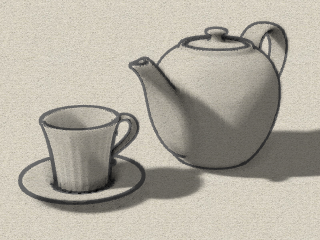
 Pen
Pen
Uses white with black lines to simulate a pen drawing.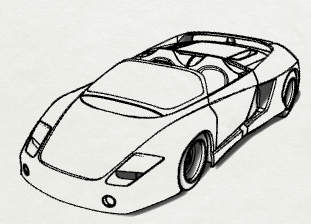
 Monochrome
Monochrome
All objects display white with gray scale shading, black silhouettes and edges.
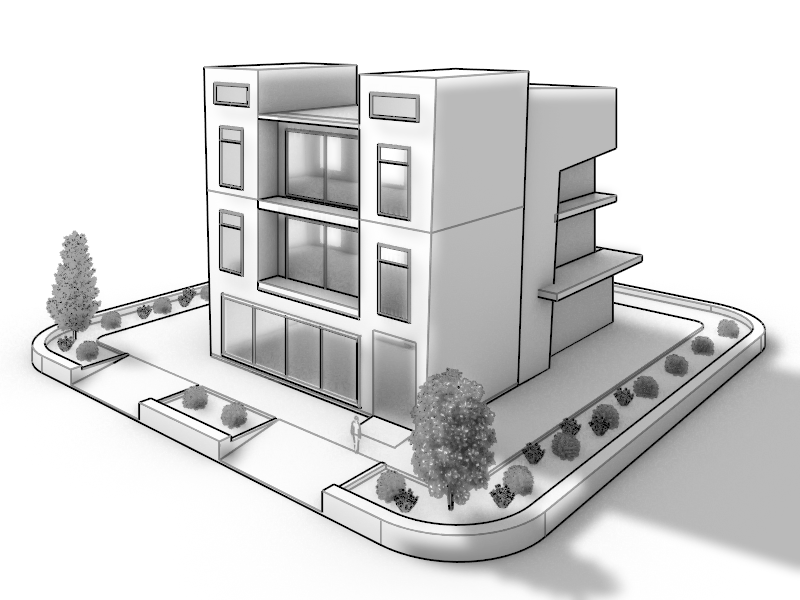
 Arctic
Arctic
Uses white for all objects and the background with soft shadows to give the feeling of the Arctic.
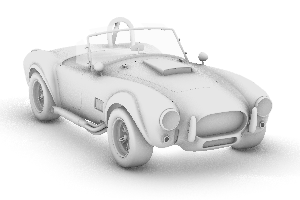
Managing display modes
You can edit the settings in a Standard display mode or you can create custom display modes.
To create a new display mode
- Under STANDARD, highlight a display mode you would like to use as a template.
- Click the Plus
 button .
button .
The new display mode appears under CUSTOM. - Select this mode and edit the settings.
To delete a custom display mode
- Under CUSTOM, highlight a display mode to delete.
- Click the Minus
 button .
button .
To export a display mode
- Click the gear
 button.
button. - Select Export <Name> display mode...
The display mode settings are exported to an ini file.
To import a display mode
- Click the gear
 button.
button. - Select Import display mode.
- Select a display setting file (*.ini) to import.
Restore Defaults
Restores the default system values. All custom display mode settings will be lost.
Settings
Not all of the settings described below are available for all display modes.
General
Display Modes
Display mode options
Name
Name of display mode.
User interface options
Include in View's display menu
Displays the custom display mode in the viewport title and View menus.
Include in Shade command modes
Offers the custom display mode as an option for the Shade command.
Allow assignment to individual objects
Allows applying this display mode to objects with the SetObjectDisplayMode command.
Viewport settings
Background
Specifies the viewport background color.
Use application settings
Use settings specified in Appearance > Color Options.
Solid color
To select a color
- Click the color swatch.
Image file
Specifies an image for the viewport background.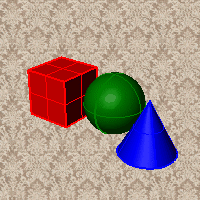
Image file name
- Type or browse for the file name.
Gradient 2 colors
Blends between a top and bottom color.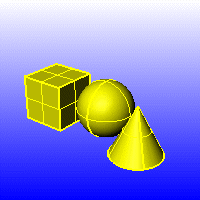
Top color / Bottom color
To select a color
- Click the color swatch.
Gradient 4 colors
Blends between four colors starting from the corners of the viewport.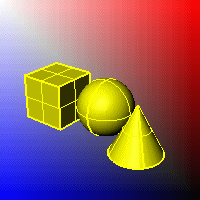
Top left color / Top right color / Bottom left color / Bottom right color
To select a color
- Click the color swatch.
Use render settings
Displays the colors and lighting used by the settings for background specified by the current renderer.
Transparent
Renders viewport backgrounds using black and a 0.0% alpha value. This works for rendered output and for ViewCaptureToFile. 
Shading settings
Shade objects
Sets the viewport to opaque shaded mode.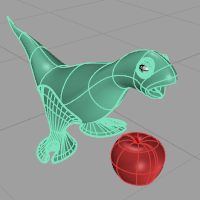
X-Ray all wires
Shades with isocurves not obscured by objects in front.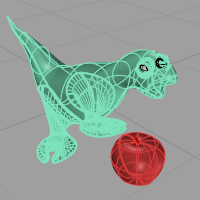
Flat shading
Shades the current viewport with no smoothing so the individual render mesh faces are visible. 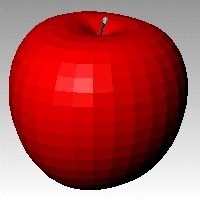
See: FlatShade.
Shade vertex colors
Shades using an object's vertex colors.
See: ComputeVertexColors .
Color and material
Single color for all objects
Ignores object colors and uses a single color for the shading.
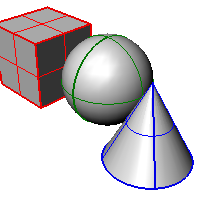
Gloss
Sets the gloss for the color.
Transparency
Sets the transparency for the color.
Single object color
To select a color
- Click the color swatch.
Rendering material
Shades using rendering material.
Custom material for all objects
Click the button to specify the custom material.
Customize
Opens the Custom Object Attributes Settings dialog box.
Backface settings
Changes the color of the backface (the side opposite of the surface normal direction).
Use front face settings
No color change.
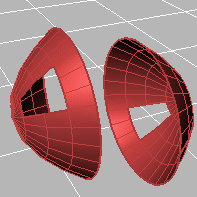
Cull backfaces
Surfaces viewed from the back will be transparent.

Use object's color
Surfaces viewed from the back use the color specified in the object's Properties.
Gloss
Sets the gloss for the backface material. This can be different from the front face material.
Transparency
Sets the transparency for the backface material. This can be different from the front face material.
Single color for all backfaces
All backfaces display a specified color regardless of the object color.
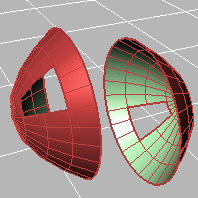
Gloss
Sets the gloss for the backface material. This can be different from the front face material.
Transparency
Sets the transparency for the backface material. This can be different from the front face material.
Single backface color
Sets a single color for all backfaces.
To select a color
- Click the color swatch.
Rendering material
Shades using rendering material.
Custom material for all backfaces
Click the button to specify the custom material.
Customize
Opens the Custom Object Attributes Settings dialog box.
Shading effects
Standard shading
Uses normal solid shading.
Parallel lines
Uses parallel lines for shading.
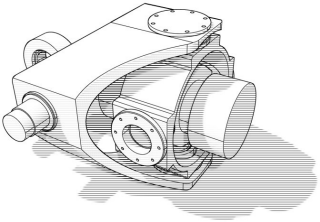
Width (in pixels)
Width of the lines.
Separation (in lines)
Distance between lines.
Rotation (in degrees)
Rotation angle of lines.
Visibility
Specifies which elements will be visible in the display mode.
Show surface edges
Shows the edges of NURBS surfaces.
Show isocurves
Shows object isocurves.
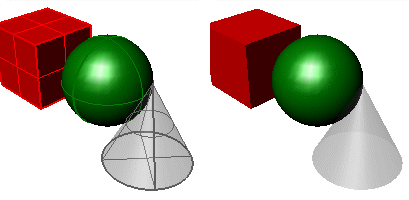
Isocurves on (left) and off (right).
Show tangent edges
Tangent polysurface edges are smooth edges between different faces of a polysurface.
Show tangent seams
Tangent seams are smooth edges that close surfaces such spheres or cylinders.
Shows mesh wires.
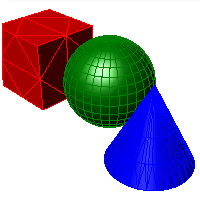
Show SubD wires
Toggles visibility of SubD smooth edges.
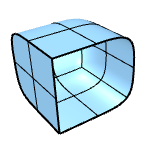
Show SubD creases
Toggles visibility of SubD creased edges.
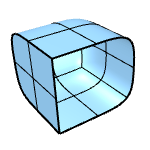
Show SubD boundaries
Toggles visibility of SubD naked edges.
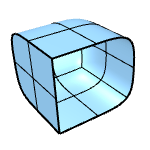
Show SubD symmetry
Toggles color differentiation of SubD symmetry children.
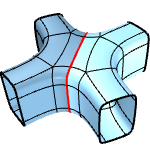
Change the display color of symmetry children
Show mesh wires
Toggles visibility of welded mesh edges.
Show curves
Shows curves objects.
Show lights
Shows lights objects
Show clipping planes
Shows clipping planes objects.
Show text
Shows text blocks.
Show annotations
Shows annotations objects.
Show points
Shows points objects.
Show pointclouds
Shows pointclouds objects
Lighting scheme
See Lighting scheme settings.
Grid
Objects
See Objects settings.
Points
See Points Settings.
Curves
See Curves Settings.
Surfaces
See Surfaces settings.
SubD
See SubD settings.
Meshes
See Meshes settings.
Lights
See Lights settings.
Clipping Planes
Lines
See Lines settings.
Shadows
See Shadows settings.
Other Settings
See Other Settings.
Save option settings for use on other computers
OptionsExport
Save Options settings to a file.
OptionsImport
Restore Options settings from a file.
Related command
| Toolbar | Menu | Shortcuts |
|---|---|---|
|
|
|
Ctrl (CMD) + Alt + CMD + Ctrl + G Ghosted R Rendered S Shaded W Wireframe X XRay |
The SetDisplayMode command specifies a display mode.
To set a mode name that has spaces, use either of the following formats:
-_SetDisplayMode Mode=MyMode
-_SetDisplayMode "My Mode"
| Command-line options | |
|---|---|
|
Viewport |
ActiveSets the display mode for only the active viewport. AllSets the display mode for all viewports. |
|
Mode |
Lists all of the current display modes in the model. |

